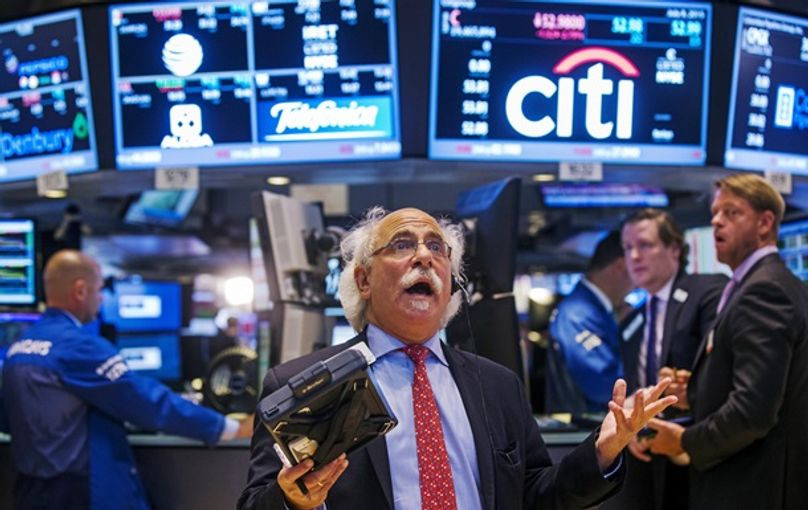
Today, the stock indices in the Asia-Pacific region mainly grow against the backdrop of good dynamics in the markets of America, which was noted at the closing of yesterday's trading session.
The head of the Bank of Japan made a statement that the country was ready to continue a soft stimulating policy, as it has proven itself to support the economy in a difficult situation associated with the global COVID-19 pandemic, and remains extremely relevant against the background of a possible second wave of the disease. As the state emerges from the crisis, the regulator will smoothly return to its goal in terms of inflation in the region of 2%.
Japan's Nikkei 225 Index rode rapidly by 1.22% in the morning. On the other, the country's clothing production and sales sectors are growing the worst: the increase in Fast Retailing was only 0.2%. Things are best in the investment technology and car manufacturing sectors.
Stock markets in China remain inoperative due to the holidays, but the Hong Kong Hang Seng index fell slightly by 0.6%.
The South Korean Kospi Index rose 1.08%. Samsung Electronics Co. managed to achieve good results here rising to 2.9%, and Kia Motor with 1.8%.
Australia's S & P / ASX 200 index rose by 1.42%. Here, the financial sector and the largest oil producers became growth leaders. Thus, the securities of the largest financial corporations in the country rapidly move up. Commonwealth Bank of Australia added 2.3% to its previous value, Westpac Banking increased by 3.2%, National Australia Bank by 2.7%, and Australia & New Zealand Banking Group also rose by 3.1%.
Yesterday, the stock markets of America completed their work on a positive acquiring and increase almost everywhere.
The Dow Jones Industrial Average jumped immediately by 1.18% or 299.66 points, which moved it to the mark of 25 745.60 points.
The Standard & Poor's 500 index increased by 1.1% or 33.43 points. Its current level is in the region of 3 083.76 points.
The Nasdaq Composite Index rose by 1.09% or 107.84 points, which sent it to the mark of 10 017 points.
The steady growth of US stock indices began to be recorded only in the last hour of the trading session when very positive data began to come on statistics on the economic recovery of the state. Until that moment, the indicators were in an extremely unstable situation, which was accompanied by multidirectional dynamics, provided by news of an increase in the number of COVID-19 patients in the territory of individual states, which in turn signaled a very probable second wave of the COVID-19 pandemic.
The situation was aggravated by the fact that the authorities decided to cancel the lifting of quarantine measures, which was already taking place everywhere. Market participants were wary of the background of such steps, which are likely to further slow down economic growth in the country.
So, according to statistics from the country's Department of Commerce, in the first quarter of this year, the United States economy shrank by 5% in terms of average annual rates. This decline was the first in six years. In 2014, there was also a decrease, which nevertheless was much lower with 1.1%.
Statistics on the number of newly submitted applications for unemployment benefits also turned out to be slightly worse than preliminary forecasts of analysts. Real numbers reflected a growth of 1.48 million people, while earlier growth was expected to be no more than 1.3 million people.
Despite too positive statistics on economic growth, the US government still hopes that V-shaped growth should happen.
European stock markets also found themselves in a positive zone following yesterday's trading.
The EU's total Stoxx Europe 600 index of enterprises increased by 0.72%, which sent it to the level of 359.74 points.
The UK FTSE 100 index rose 0.38%. The German DAX Index climbed 0.69%. The CAC France index showed one of the highest growth levels with 0.97%. The Italian FTSE MIB index gained 0.37%. Spain's IBEX 35 Index takes the lead with an increase of 1.04%.
The main market support came from the region's main regulator, the ECB, which proposed a new mechanism for issuing loans to the Central Bank, which are not in the euro area. Using this mechanism, most central banks in the world will be able to issue loans in a single European currency, while debt securities also denominated in euros will act as collateral. This will help maintain the liquidity of the euro in the event of too much negative from the pandemic and its influence will call into question the implementation of the monetary policy of the European Central Bank.
Among other things, yesterday it became known that consumer confidence in the economy of the main EU country - Germany - is gradually growing. Particularly quickly, this growth began to occur after enterprises began to return to their work after quarantine measures. This gives hope for an even more confident rise in the future.
In the meantime, positive news for the stock markets is enough to ensure a steady increase continued until the next correction.





















